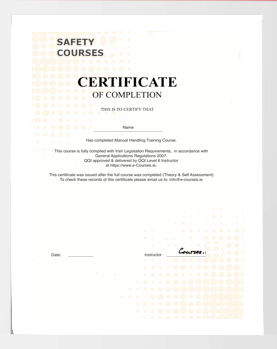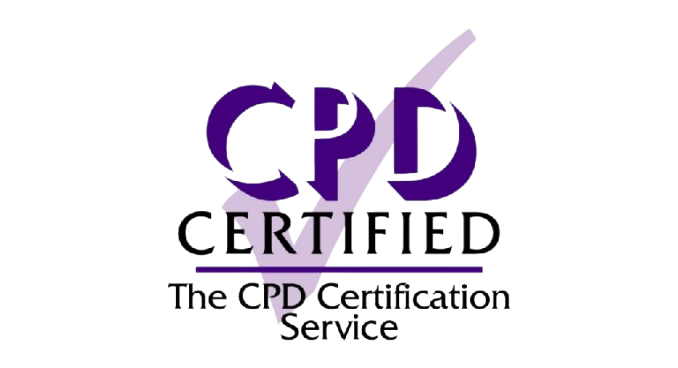
e-Learning Course
 Duration: 30 minutes
(Approx)
Duration: 30 minutes
(Approx)
 Certificate valid for: 3
years
Certificate valid for: 3
years

€39 ➜ Now €34.99 – All-Inclusive

e-Learning Course
 Duration: 2 hours (Approx)
Duration: 2 hours (Approx)
 Certificate valid for: 3
years
Certificate valid for: 3
years

€39 ➜ Now €34.99 – All-Inclusive

e-Learning Course
 Duration: 2 hours (Approx)
Duration: 2 hours (Approx)
 Certificate valid for: 3
years
Certificate valid for: 3
years

€39 ➜ Now €34.99 – All-Inclusive
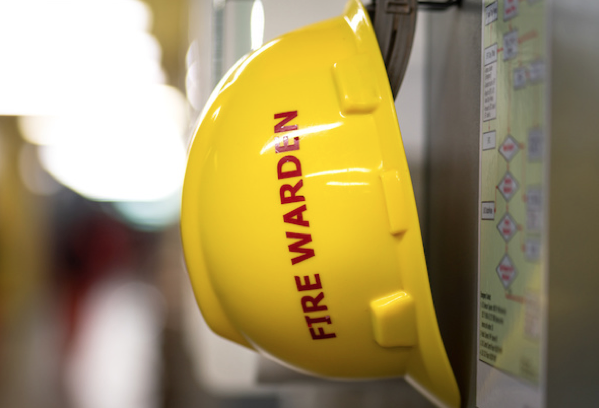
e-Learning Course
 Duration: 2-3 hours (Approx)
Duration: 2-3 hours (Approx) Certificate valid for: 3 years
Certificate valid for: 3 years
€39 ➜ Now €34.99 – All-Inclusive
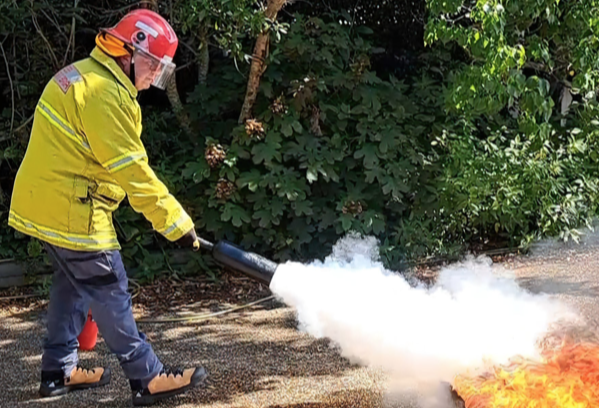
e-Learning Course
 Duration: 2-3 hours (Approx)
Duration: 2-3 hours (Approx) Certificate valid for: 3 years
Certificate valid for: 3 years
€39 ➜ Now €34.99 – All-Inclusive

e-Learning Course
 Duration: 2-3 hours (Approx)
Duration: 2-3 hours (Approx) Certificate valid for: 3 years
Certificate valid for: 3 years
€39 ➜ Now €34.99 – All-Inclusive
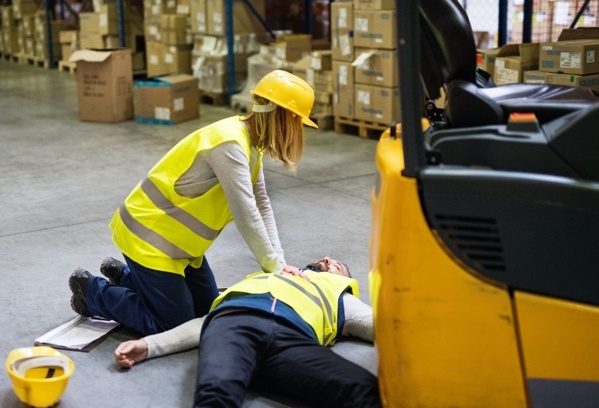
e-Learning Course
 Duration: 2-3 hours (Approx)
Duration: 2-3 hours (Approx) Certificate Validity: 2 Years
Certificate Validity: 2 Years
€80 ➜ Now €50 – All-Inclusive

e-Learning Course
 Duration: 2-3 hours (Approx)
Duration: 2-3 hours (Approx) Certificate Validity: 2 Years
Certificate Validity: 2 Years
€80 ➜ Now €50 – All-Inclusive

e-Learning Course
 Duration: 1-2 hours (Approx)
Duration: 1-2 hours (Approx) Certificate valid for: 3 years
Certificate valid for: 3 years
€39 ➜ Now €34.99 – All-Inclusive

e-Learning Course
 Duration: 1-2 hours (Approx)
Duration: 1-2 hours (Approx) Certificate valid for: 3 years
Certificate valid for: 3 years
€39 ➜ Now €34.99 – All-Inclusive

e-Learning Course
 Duration: 2 h 30 mins (Approx)
Duration: 2 h 30 mins (Approx)
 Certificate valid for: 3
years
Certificate valid for: 3
years

€39 ➜ Now €34.99 – All-Inclusive

e-Learning Course
 Duration: 2 h 30 mins (Approx)
Duration: 2 h 30 mins (Approx)
 Certificate valid for: 3
years
Certificate valid for: 3
years

€39 ➜ Now €34.99 – All-Inclusive

- Dublin
- Cork
- Limerick
- Galway
- Waterford
- Kilkenny
- Sligo
- Dundalk
- Athlone
- Tralee
- Wexford
- Clonmel
- Ennis
- Navan
Join & Learn Now!
- Privacy Policy
- Refund Policy
- Cookies Policy
- FAQ's
- Reset Password
- Customer Login
- Verify Certification
WHAT DOES MY CERTIFICATE INCLUDE?
Your Certificate includes your name, company name (if applicable), name of course taken, name of your instructor, date of completion, expiry date and stamps of approval or accreditations by recognised authorities.

Refund Policy
All purchases made through our website are considered final.
Reasons that entitle a customer to obtain a full refund:
Reasons that do not entitle a customer to obtain a refund:
Information needed to process a refund:
We process all refunds via the original payment method. Once a refund is processed, the customer will lose access to the services. In addition, the account will be permanently deleted from our system if there are no other pre-existing certificates.
To request a refund, please send us an email with the required information at [email protected]
Cookies Policy
Our sites use “cookies” and other tracking technologies which help us to improve our sites and to deliver a better, and more personalised, service.
1. What is a cookie?
This enables the website to identify and track the web browser. Cookies can, among other functions, enable a website to recognise a device each time it visits, remember user preferences and recommend content.
2. What sort of cookies are there?
There are four general categories of cookies:
For example, (we have a cookie that recognises the region you are in thereby allowing us to tailor the website accordingly).
Essential cookies do not gather any information that could be used for marketing purposes. These cookies do not retain information beyond the end of your visit.
For example, (we use ad conversion tracking and analytics tracking cookies).
All information that these cookies collect is aggregated and therefore cannot identify any visitor.
The information is only used to improve how a website works.
For example, (one of our cookies enables you to stay signed into the website and recognises you when you arrive).
The information these cookies collect may be anonymised and they cannot track browsing activity on other websites.
All cookie lengths 30 days, ad conversion tracking, analytics tracking etc.
They are also used to limit the number of times an advert is displayed and help measure the effectiveness of an advertising campaign.
They remember that users have visited a website and the information is often shared with other organisations, such as advertisers.
3. Third party cookies?
Google Analytics generates statistical and other information about website use by means of cookies, which are stored on users’ computers.
The information generated relating to our website is used to create reports about the use of the website.
Google will store this information. Google’s privacy policy is available at: http://www.google.com/privacypolicy.html
4. Can you block cookies?
(For example, in Internet Explorer you can refuse all cookies by clicking Tools, Internet Options, Privacy, and selecting Block all cookies using the sliding selector).
Our e-learning courses are 100% online, making it easy for you to get the training that you and your company need, either in your spare time or at work and at any time of day. Bigger orders = better discounts. The courses have no time limit for completion so you can take full advantage of your training.
Large enterprise orders above 500 courses are dealt with on a case-by-case basis. This includes a tailor-made package to suit your needs, with some of the following benefits:
To discuss any of your training requirements and budget in more detail, please contact our friendly sales team on +35314434404
MINIMISE DISRUPTION - TRAIN ONLINE.
Traditional training methods mean getting all your staff to break off from work and gather in one place. We believe there's a better way... Training online frees you from the costs and disruption to your business of gathering everyone in a single place to learn. Online training is accessible 24 hours a day, 7 days a week, 365 days a year; and your progress is automatically saved. Staff can train from any location or even when commuting.Verify Certification
Please email us to: [email protected] This message:
Verify Certificate
1. Candidate Name -
Enter the candidate name exactly as it appears on the certificate.
2. Certificate number -
The certificate number appears on the bottom right of the certificate.
Enter this number exactly as it appears (including the dashes).
And send it to us. We will reply to your text as soon as we can.
We are committed to protecting your personal information and being transparent about the data we hold about you (“personal data”). This privacy policy, together with our Cookies Policy, applies to all visitors and users of our websites at https://safetycoursesonline.ie/ (the “sites”) and our online services and sets out how we will use your data and your privacy rights. It also relates to personal data you provide us by phone, SMS, email, letters, and other correspondence in person.
We use your information in line with all applicable laws and regulations concerning the protection of personal data from time to time in force, including the Data Protection Act 2018, the Privacy and Electronic Communications (EC Directive) Regulations 2003 and 2011 and the General Data Protection Regulations (GDPR), and including any amendments or updates to these and any equivalent or successor applicable laws and regulations. Nothing in this privacy policy shall limit your statutory rights about your personal data.
1. Who will hold your information?
For this privacy policy, the data controller is SafetyCoursesOnline.ie (“E Courses Ltd” or “we”).
2. What information do we collect and how?
2.1. We may collect, store and use the following kinds of personal data:
2.2. We use different methods to collect personal data from and about you as follows:
Direct Interactions: You may give us your data directly by filling in forms on our sites or by corresponding with us by post, phone, email or otherwise.
This includes personal data you provide when you:
Please see our Cookies Policy for further details.
Third parties or publicly available sources: We may receive personal data about you from various third parties and public sources as set out below. Technical Data, for example, from:
Contact Financial and Transaction Data from providers of technical and payment services, such as our third-party card payment service providers.
Identity and Contact Data from publicly available sources such as Companies House.
2.3. We do not collect any Special Categories of Personal Data about you (this includes details about your race or ethnicity, religious or philosophical beliefs, sex life, sexual orientation, political opinions, trade union membership, information about your health, and genetic and biometric data). Nor do we collect any information about criminal convictions and offences.
2.4. We may keep a record of correspondence, telephone calls or online live chat communications if you contact us.
2.5. We may monitor or record your communications with us to assist us with developing our sites and services to train our staff, and if so requested by order of a court, regulatory body or law enforcement organization.
3. How do we use your personal data?
3.1. We will only use your personal data for the purposes specified in this privacy policy or in relevant parts of the sites and only ever as permitted by law.
3.2. We may use your personal information to:
We use third-party payment card providers to manage our online card transactions. We do not retain any record of your payment card information.
After reviewing their privacy policies, which are available on their website(s), you should only provide your data to those payment card providers.
Your payment card information is used solely to process payments you make via our sites or for fraud prevention and detection purposes.
Our payment card providers collect data via a secure online payment gateway.
4. Marketing and consent
4.1. We may use your personal data to form a view on what products, services and offers may interest you (“marketing”).
4.2. You will receive marketing communications if you have requested information from us or purchased services from us and have not opted out of receiving that marketing.
4.3. We will always obtain your express opt-in consent before we share your personal data with any third party for marketing purposes.
4.4. You can ask us or third parties to stop sending you marketing messages at any time by following the opt-out links on any marketing message sent to you.
5. Lawful basis for using your personal data
5.1. We process your personal data based on the lawful basis set out below. We may process the information you provide on multiple legal bases, depending on the specific purpose for which we are using it.
Contract: To enter into a contract with you and fulfil our contractual obligations to you.
This processing is necessary for us to provide the service you have requested, including BUY NOWing and managing your account with us and providing service updates and related information).
Consent: Where you have consented to our use of your personal data, for example, where you opt-in to receive relevant marketing communications from us (e.g. industry news and offers)
Legal Obligation: Where processing is necessary to comply with legal or statutory requirements on us.
This may include cooperating with police about their investigations.
Legitimate interest: Where processing is necessary for our legitimate interests (or those of a third party), provided that these do not conflict with your interests or fundamental rights.
This may include improving our sites and services, understanding how visitors and customers use our sites and services, undertaking market research and informing our marketing, running our business and maintaining the security of our sites and services for you, us and other site visitors and customers.
6. Disclosing your personal data
6.1. Except as this privacy policy provides, we will not provide your information to third parties.
6.2. We may disclose your data to any of our employees, officers, agents, suppliers or subcontractors insofar as reasonably necessary for the purposes set out in this privacy policy.
6.3. We may disclose your personal data to any member of our group, which means our subsidiaries, our ultimate holding company and its subsidiaries. 6.4. We may also use or disclose your personal data as follows:
7. Storing and transferring your data
7.1 Your personal data may be collected by our Group Companies in Romania according to the location where you are based. They may be transferred to and stored by another Group Company and the third parties disclosed in section 6 in locations outside your jurisdiction for the purposes and under the lawful bases set out in this policy.
7.2 Your personal data may, therefore, be processed outside of your jurisdiction and in countries that are not subject to an adequacy decision by the European Commission or, as the case may be, your local regulator/competent body and that may not provide the same level of data protection as your jurisdiction, for example in the EEA.
As such, we put in place adequate measures to ensure that any transfer of personal data outside of your authority is protected according to the applicable data protection laws, including, as required, to ensure that a similar degree of protection is afforded to the transferred data by the recipient.
Such safeguarding measures may consist of putting back-to-back agreements in place and, if required, standard contractual clauses as approved by the European Commission (Art 46 GDPR) or similar model clauses as may be adopted occasionally.
7.3 Please contact us as set out in section 14 below if you would like further information on the specific mechanisms used by us when transferring your data outside of your jurisdiction.
8. Security of your data
8.1. Data transmission over the Internet is inherently insecure, and we cannot guarantee the security of data sent.
8.2. We have implemented appropriate security measures to prevent your personal data from being accidentally lost, used or accessed in an unauthorized way, altered or disclosed. In addition, we limit access to your personal data to those employees, agents, contractors and other third parties who have a business need to know. They will only process your data on our instructions and are subject to a duty of confidentiality.
8.3. We have put in place procedures to deal with any suspected personal data breach and will notify you and any applicable regulator of a breach where we are legally required to do so.
8.4. You are responsible for keeping your password and user details confidential. We will not ask you for your password.
9. Retention period
9.1. We will process personal data for as long as necessary to fulfil the purpose we collected it for, including the definition of legal, accounting and reporting requirements, and for as long as needed for preventing and detecting criminal activity.
The period we process and store personal data varies depending on your use of our sites and services.
Where you BUY NOW an account or subscribe to our services, we will retain your personal data for as long as your account is live or as necessary to continue to provide you with our services and for a further period thereafter to enable us to satisfy our legal, accounting and reporting requirements.
9.2. In some circumstances, you can ask us to delete your data: see Right to be Forgotten below for further information.
9.3. In some circumstances, we may anonymize your personal data (so that it can no longer be associated with you) for research or statistical purposes. We may use this information indefinitely without further notice.
10. Your rights
10.1. At any point while we are in possession of or processing your data, you, the data subject, have the following rights:
Right of access – you can request a copy of the information we hold about you. If we refuse your request under rights of access, we will provide you with a reason as to why;
Right of rectification – You have a right to correct data that we hold about you that is inaccurate or incomplete;
Right to be forgotten – In certain circumstances, you can ask for the data we hold about you to be erased from our records;
Right to restriction of processing – Where certain conditions apply to have a right to restrict the processing;
Right of portability – In certain circumstances, you have the right to have the data we hold about you transferred to another organization;
Right to object – You have the right to object to certain types of processing, such as direct marketing, automated processing or profiling;
Right to complain to the supervisory authority – You have the right to complain as outlined in section 14 below;
Please email [email protected] if you have any queries regarding your rights. You can exercise your rights as set out above by emailing [email protected] and/or by following Manage Your Data Preferences here.
All of the above requests will be forwarded should there be a third party involved (as set out in this Privacy Policy) in processing your personal data.
11. Updating information
11.1. Please let us know if the personal information we hold about you needs to be corrected or updated.
12. Policy amendments
12.1. We may update this privacy policy from time to time by posting a new version on our sites. You should check this page occasionally to ensure you are happy with any changes.
12.2. We may also email you about changes to our privacy policy.
13. Third party websites
13.1. The sites may include links to third-party websites, plug-ins and applications.
Clicking or enabling those links may allow third parties to collect or share your data.
We do not control these third-party websites and are not responsible for their privacy statements.
When you leave our website, we encourage you to read the privacy policy of every website you visit.
14. Contact and complaints
14.1. If you wish to make a complaint about how your data is being processed by Safety Courses Online (or third parties as described above) or how your complaint has been handled, in the first instance, please email your concerns to [email protected]
Workplace Health & Safety
A thorough understanding of health and safety is essential in all workplaces, regardless of job role and industry. This accredited Health and Safety For Employees course ensures that you understand the most common health and safety risks in your workplace and the control measures that are needed to keep you safe.
The course covers the most crucial aspects of health and safety that are present in every workplace, such as manual handling, working at heights, and fire and electrical safety. It also explains the necessary components of workplace welfare, including workplace stress and conflict.
This course has been updated and is legally accurate in line with any guidance changes that have resulted from Brexit legislation - including any revisions to deadlines.
- Developed by Health and Safety Professionals
- Fully online course and assessment with no time limits
- Approximate duration: 3 hours
- Downloadable certificate on completion
Who should take this course?
Workers in all workplaces and industries are required to take health and safety training to ensure that they keep themselves, and those they work with, safe.
This course is designed for workers of all abilities and in all environments, including those who work in construction, education, offices, and hospitality. It covers the common health and safety risks that are present in all of these environments.
If you work in a low-risk environment and have never undertaken health and safety training before, then the Basic Health & Safety course provides an induction that may be more suitable for your needs.
If you are a manager or supervisor, then the Health & Safety For Managers course is recommended for your role.
This certified online training is ideal for people working in positions such as, but not limited to:
- Engineer
- Electrician
- Chef / Cook
- Administrator
- Teacher
Working remotely? Our Health & Safety For Home Workers training is specifically designed for remote working in the home.
Course content
| Module | Description | |
|---|---|---|
| 1 | Introduction to Health and Safety Law | The benefits of health and safety, the main causes of workplace ill-health and accidents, factors that impact on health and safety, the Health and Safety at Work etc. Act 1974, the Management of Health and Safety at Work Regulations 1999 (MHSWR), the Health and Safety Executive, health and safety hazards, and the Reporting of Injuries, Diseases and Dangerous Occurrences Regulations (RIDDOR). |
| 2 | Risk Assessment | What is a risk assessment?, who should carry out a risk assessment?, identify the hazards, decide who might be harmed and how, evaluate the risks and decide on controls, record your findings, and review and update the risk assessment. |
| 3 | Workplace Safety | Safe systems of work, slips, trips and falls on the same level, falls from height, housekeeping, electrical safety, and fire safety. |
| 4 | Workplace Welfare | Welfare facilities, first aid, first aid safety signs, workplace stress, drugs and alcohol, and workplace conflict and violence. |
| 5 | Manual Handling and Display Screen Equipment | Manual handling, manual handling regulations, further requirements for lifting equipment, reducing manual handling risks, good manual handling techniques, display screen equipment, and workstations. |
| 6 | Hazardous Substances and Working at Heights | Hazardous substances, the Control of Substances Hazardous to Health Regulations 2002 (COSHH), hazardous substances control measures, training and instruction, safety data sheets (SDSs), hazard labelling and packaging, working at height, working at height control measures, mobile towers, mobile elevating work platforms (MEWPs), marking of working at height equipment, safe use of ladders, and stepladders. |
| 7 | Noise, Vibration and Vehicle Safety | Noise at work, noise elimination, reduction, and control, hand-arm vibration, Hand-Arm Vibration Syndrome (HAVS) and Carpal Tunnel Syndrome (CTS), employer and employee responsibilities, vehicles, and safe use of vehicles. |
Aims of the course
By completing this training, you will:
- Have knowledge of key health and safety topics and how to ensure good practice within them.
- Understand the responsibilities of employers and employees under health and safety legislation.
- Understand the importance of, and the key factors in, undertaking a risk assessment to prevent and control hazards.
- Know the hazards and ill health effects associated with specific work activities and processes.
Assessment
The online assessment is taken on completion of the training material. You will be asked 20 multiple choice questions with a pass mark of 80%. The answers are marked automatically so that you’ll instantly know whether you passed. If you don't pass don't worry! You can take the test as many times as you need with no extra charge.
Asbestos Awareness Course (Category A)
Asbestos is an extremely hazardous substance that causes serious ill-health to anyone who disturbs or damages it. For this reason, all workers who may come across asbestos or asbestos-containing materials (ACMs) must be trained so that they can work safely. This includes work with potential ACMs, accidental discovery of asbestos, and accidental damage to asbestos and ACMs.
This IATP accredited Asbestos Awareness (Category A) course provides a comprehensive introduction to the dangers of working with asbestos. By taking our training you will be complying with the Control of Asbestos Regulations 2012. You will understand what asbestos is and where you may encounter it, the dangers associated with asbestos exposure, and what to do if you discover asbestos. This knowledge will help you or your team to stay safe around asbestos.
This course has been updated and is legally accurate in line with any guidance changes that have resulted from Brexit legislation - including any revisions to deadlines.
- Developed by Health and Safety Professionals
- Online training course and assessment with no time limits
- Approximate duration: 2 hours
- Downloadable certificate on completion
Who should take this course?
Our accredited Asbestos Awareness (Category A) course is designed for anybody who works with, or near, asbestos at work. This includes the following job roles:
- Heating engineers
- Ventilation engineers
- Carpenters and joiners
- Roofers
- Roofers
- Construction workers
- Demolition workers
- Plumbers
- Painters and decorators
- General maintenance workers
Please note that as this is a Category A Asbestos Course, the information in this course is an awareness level of training. It does not allow you to work with asbestos or conduct asbestos removal. Such work requires practical training additional to this course.
Course content
| Module | Description | |
|---|---|---|
| 1 | Introduction | In the first module of this course, we will provide you with a comprehensive introduction to asbestos awareness. We will explain what asbestos is, how you may disturb it during your work and the risks to your health from asbestos exposure. |
| 2 | The Control of Asbestos Regulations |
This second module explains the main requirements of the Control of Asbestos Regulations 2012 (the CAR 2012) and how they apply to dutyholders. |
| 3 | Health Risks and Personal Factors |
In the third module, we will explain the health complications that arise after exposure to asbestos. You will learn about asbestos-related diseases, Workplace Exposure Limits and your requirements for respiratory protective equipment. |
| 4 | Discovery of Asbestos or Accidental Disturbance of ACMs |
In the final module, we will examine the dangers of disturbing asbestos. You will learn what to do if you discover asbestos unexpectedly, if you accidentally disturb Asbestos Containing Materials and the emergency procedures that you must follow. |
Aims of the course
By completing this training, you will understand:
- Why asbestos and asbestos-containing materials (ACMs) can be harmful and must be treated as hazardous substances.
- The very serious ill-health effects of asbestos.
- The control measures for asbestos required by the law.
- The responsibilities of employers and employees.
- What to do on discovery or accidental disturbance of asbestos-containing materials.
Assessment
After completing the four modules, you will be invited to take the course assessment. This is made up of 20 questions and will test the knowledge you have gained from your training. The questions are multiple choice and are marked automatically, so you will instantly know whether you have passed. The pass mark for the assessment is 80% and you can take it as many times as you need to with no extra charge.
Workplace First Aid Online Training Course
This online Workplace First Aid course is essential for everyone in every workplace and every home; you never know when you may need to use first aid skills and have the confidence to act in a potentially life-threatening situation.
Using high quality videos alongside written guidance, this online course will provide you with all the information needed to be able to recognise emergency situations, treat conditions and reactions and ensure that you can take appropriate action at the time of an incident. You will also learn how to safely administer first aid during the COVID-19 pandemic and the additional measures that are necessary, including personal protective equipment (PPE) and thorough cleaning.
Note that this online training course gives you sufficient awareness of first aid, but it does not replace competency-based, practical training. Always seek medical advice in case of emergency.
- Developed by a qualified first aid professional
- Approved by CPD
- Fully online course and assessment with no time limits
- Approximate duration: 3-4 hours
- On completion, certificate is posted the next working day
Who should take this course?
This course is suitable for people and businesses who wish to learn new first aid skills or refresh their existing first aid skills. No previous qualifications are needed to take this course as all the basic first aid techniques are covered throughout the training.
This course is best suited to low hazard workplaces (such as offices, shops and restaurants) where a qualified first aider is not required according to the first aid needs assessment. It's considered best practice for all employees to be provided with first aid knowledge, particularly those who are in charge of first aid arrangements, and this course satisfies that requirement.
Does This Course Allow Me to Become a Qualified First-Aider?
Always refer to your workplace's first aid needs assessment to determine whether you require practical training alongside this online course.
Course content
| Module | Description | |
|---|---|---|
| 1 | Introduction to Workplace First Aid |
What is first aid?, first aid during COVID-19, key annual statistics, the Health and Safety (First-Aid) Regulations 1981, medical assistance, first aid kit, the importance of infection prevention, hand hygiene, handwashing procedure, personal protective equipment (PPE), cleaning after delivering first aid, waste disposal after giving first aid, recordkeeping, and the Reporting of Injuries, Diseases and Dangerous Occurrences Regulations 2013 (RIDDOR). |
| 2 | The Primary and Secondary Surveys |
The primary survey (DRABC), step 1 - danger, step 2 - response, step 3 - airway, step 4 - breathing, step 5 - circulation, primary survey example scenario, the secondary survey, and full body examination. |
| 3 | The Recovery Position and Cardiopulmonary Resuscitation (CPR) |
Unconscious casualties, the recovery position for adults and children, the recovery position for infants, the jaw thrust technique, cardiac arrest, administering CPR, administering hands-only CPR to adults, administering CPR with rescue breaths to adults, administering CPR to children, administering CPR to infants, further considerations for CPR, and defibrillators (AEDs). |
| 4 | Treating Injuries: Part One | Choking, wounds and bleeding, applying a bandage, shock, burns and scalds, electrical burns, and chemical burns. |
| 5 | Treating Injuries: Part Two | Eye injuries, head injuries, fractures, sprains and strains, dislocations, making an arm sling, and spinal injuries. |
| 6 | Illnesses and Health Conditions | Heart attacks, angina attacks, strokes, epilepsy, asthma, allergic reactions and anaphylaxis, diabetes, hyperventilation, nosebleeds, poisoning, and drowning. |
Aims of the course
Upon completion of this training, you will understand:
- The workplace first aid regulations, including first aid kits, training, and reporting incidents.
- Infection prevention considerations, including hand hygiene, personal protective equipment, cleaning after first aid, and waste management.
- How to carry out a primary survey using the DRABC acronym (danger, response, airway, breathing, and circulation), as well as how to carry out a secondary survey.
- How to put casualties into the recovery position, including if you suspect a spinal injury, and how to administer CPR to them and use defibrillators.
- How to treat a variety of injuries, including choking, wounds, shock, burns and scalds, eye and head injuries, fractures, sprains and strains, dislocations, and spinal injuries.
- How to treat a variety of illnesses and conditions, including heart and angina attacks, strokes, epilepsy, asthma, allergic reactions, diabetic emergencies, hyperventilation, nosebleeds, poisoning and drowning.
- How to administer first aid safely during the COVID-19 pandemic, including infection prevention considerations and how you may need to alter the techniques you use.
Assessment
The online assessment is taken on completion of the training material. You will be asked 30 multiple choice questions with a pass mark of 80%. The answers are marked automatically so you will instantly know whether you have passed. If you don't pass don't worry! You can take the test as many times as you need with no extra charge.
Fire Extinguisher Training Course
This Fire Extinguisher Training course teaches you about the various types of fire extinguishers that may be present in your workplace and how to use them effectively and safely.
You'll learn about the hierarchy of fire prevention, about how fires start, and about the various classes of fires, which each require certain types of fire extinguishers to fight. Furthermore, you'll learn about the importance of assessing the situation to determine whether it’s safe for you to attempt to fight a fire, and you'll learn about the techniques for effectively and safely using each type of fire extinguisher and other fire fighting equipment, demonstrated through a range of illustrations and videos.
This course has been updated and is legally accurate in line with any guidance changes that have resulted from Brexit legislation - including any revisions to deadlines.
- Developed by Health & Safety Professionals
- Fully online course and assessment with no time limits
- Approximate duration: 1-2 hours
- On completion, certificate is posted the next working day
Who should take this course?
This course is aimed at those who are nominated by their employers to use fire extinguishers and fire fighting equipment. This includes anyone identified in the fire risk assessment, such as fire wardens, managers, supervisors, and other employees who may have been nominated to fight small, controllable fires.
It can be taken as an introductory course to using fire extinguishers before undergoing practical training, as well as periodic refresher training after receiving practical instruction. Practical training is typically refreshed every 3 years, so this course can serve as a comprehensive refresher in between. It'll solidify the learner's knowledge and build on their confidence to use extinguishers safely in an emergency.
Looking to appoint a designated fire warden or become one yourself? Our Fire Warden Training course provides learners with the necessary knowledge to fulfil this role.
Course content
| Module | Description | |
|---|---|---|
| 1 | Types of Fires and Extinguishers |
Why is fire extinguisher training important, the hierarchy of fire protection, the fire triangle, classes of fire, types of extinguishers, water extinguishers, powder extinguishers, foam extinguishers, carbon dioxide extinguishers, wet chemical extinguishers, and how many extinguishers should workplaces have and what types? |
| 2 | Understanding When to Fight Fires |
Who may use fire extinguishers in a workplace, what should you do before fighting a fire, determining if it's safe to use an extinguisher, when should you fight fire with a fire blanket, and using fire buckets and sand. |
| 3 | Using Fire Extinguishers Safely |
Selecting an extinguisher, the PASS technique, basic steps for using an extinguisher, how to use water extinguishers, how to use ABC powder extinguishers, how to use M28 and L2 powder extinguishers, how to use foam extinguishers, how to use carbon dioxide extinguishers, how to use wet chemical extinguishers, how to use a fire blanket, and what to do if you can't put out a fire. |
Aims of the course
By the end of this course, you will be familiar with:
- The fire triangle and the different classes of fires.
- The various types of fire extinguishers and fire fighting equipment that workplaces may use.
- What the responsibilities of employers are regarding fire extinguishers and fighting fires.
- What the duties are of fire wardens and other nominated employees for fighting fires.
- Which extinguishers are used to fight certain classes of fires.
- How to assess the situation if a fire starts and what first steps you should take before you attempt to fight it.
- How to use the basic PASS method to use extinguishers.
- When and how to use a fire blanket or fire damping materials such as sand.
- The specific techniques you must use for certain extinguishers to ensure safety and effectiveness.
Assessment
The online assessment is taken on completion of the training material. You will be asked 20 multiple choice questions with a pass mark of 80%. The answers are marked automatically so that you’ll instantly know whether you passed. If you don't pass don't worry! You can take the test as many times as you need with no extra charge.
Level 2 HACCP Training For Catering & Retail
By law, all food businesses – including catering, retail and manufacturing – must have an effective food safety management system in place. This Level 2 HACCP for Catering and Retail course will introduce learners to the Hazard Analysis and Critical Control Points management system and help you to understand how to comply with the law, how to work safely and efficiently and what each crucial step of the HACCP implementation process entails. This course has been written specifically for those who work in a catering or food retail environment.
By the end of the course learners will have a thorough understanding of why HACCP is important, knowledge of the importance of having effective prerequisites in place, how the 7 HACCP principles can be implemented and what can be done to identify food safety hazards and to ensure the food handled in their business remains safe for the consumer.
- Developed with food safety professionals
- Reviewed by a BRCGS approved lead auditor
- Endorsed by the Institute of Hospitality
- Ensures compliance with UK regulations on the Food Safety and Hygiene (England) Regulations 2013 (and similar)
- Ensures compliance with EU Regulation (EC) No 852/2004 on the hygiene of foodstuffs
- Fully online course and assessment with no time limits
- Approximate duration: 4 hours
- On completion, certificate is posted the next working day
If you work in food manufacturing then our specifically designed Level 2 HACCP for Manufacturing course will be more suitable.
Who should take this course?
This Level 2 HACCP for Catering and Retail course is suitable for employees at all levels within a food business. This includes full-time, part-time and temporary workers. The course aims to provide a comprehensive introduction to HACCP and teaches learners about what they can do to help their business implement the system and comply with the law.
It’s recommended that learners who have not previously taken a Level 2 Food Safety and Hygiene course do so alongside this Level 2 HACCP training.
If you’re a manager or a supervisor of a food business then you should take our Level 3 HACCP course.
This certified online training is ideal for people working in positions such as, but not limited to:
- Chef / Cook / Food Handler
- Catering / Cafe Assistant
- Food Retail Worker
If you work in food manufacturing then our specifically designed Level 2 HACCP for Manufacturing course will be more suitable.
Do You Comply With the European Food Safety Regulations?
The European Regulation (EC) No 852/2004 on the Hygiene of Foodstuffs requires food businesses in the EU to implement a food safety management system based on the Codex HACCP principles.
By providing effective training, employers can help to ensure that everyone in the workplace is competent to carry out their work safely. Managers, supervisors and other members of staff should be able to recognise the hazards posed by their work, be able to take action to reduce or eliminate the risks and understand how to follow procedures.
Regardless of the UK's membership of the EU, the internationally recognised HACCP principles remain just as relevant and are vital to ensuring the highest safety standards in the food sector.
Course content
| Module | Description | |
|---|---|---|
| 1 | Introduction to HACCP | What is HACCP?, what is Safer Food, Better Business (SFBB)?, key terms, legislation, benefits of HACCP, enforcing the law. |
| 2 | Microbial Hazards | Microbial hazards, pathogenic bacteria, spoilage bacteria, high and low-risk foods, food preservation, viral contamination. |
| 3 | Food Safety Hazards | How contamination applies to HACCP, physical contamination, chemical contamination, allergenic contamination, cross-contamination, fraud and tampering. |
| 4 | Prerequisite Programmes | Why prerequisites are required, examples of prerequisites, assessing prerequisites, analysing gaps in prerequisites. |
| 5 | Creating a HACCP System | The basics of HACCP, create a HACCP team, describe the products and ingredients, identify the uses and consumers of the products, construct a flow diagram, confirm the flow diagram. |
| 6 | The 7 Principles: Hazard Analysis and Control Measures |
The seven principles of HACCP, hazard analysis, determine critical control points, the codex decision tree, establish critical limits. |
| 7 | The 7 Principles: Monitoring and Verification | Monitor critical control points, establish corrective actions, establish verification procedures, reviewing the HACCP plan, record-keeping. |
Aims of the course
By the end of this course learners will:
- Have knowledge of food hygiene legislation and recognise why HACCP is relevant.
- Understand the main categories of food safety hazards.
- Be aware of the seven principles of HACCP.
- Understand the importance of having effective prerequisites in place before implementing a HACCP system.
- Understand what's involved in setting up a HACCP system.
- Know more about identifying food safety hazards and their appropriate control measures.
- Understand the importance of continually monitoring the HACCP system.
Assessment
The online assessment is taken on completion of the training material. You will be asked 30 multiple choice questions with a pass mark of 80%. The answers are marked automatically so you will instantly know whether you have passed. If you don't pass don't worry! You can take the test as many times as you need with no extra charge.
Coming Soon
Abrasive Wheel Training
Abrasive Wheel Training Course
Nearly half of all accidents resulting from Abrasive Wheel happen due to unsafe working practices and operator errors. If you work with Abrasive Wheel then following strict health and safety practices is paramount to protect both yourself and others from harm.
This Abrasive Wheel course will provide you with an introduction to working safely with Abrasive Wheel so that you can understand the risks and know which control measures are needed to prevent injury and ill-health.
Who Should Take This Course?
This course is suitable for anyone who uses Abrasive Wheel in their work activities. The course is particularly relevant for those who use bench grinders, pedestal grinders and angle grinders. Although the training doesn't cover the use of specialist grinding machines, the health and safety information throughout the course is still applicable. This course has been written at an introductory level and no pre-requisite training is required. Experience of using Abrasive Wheel would be advantageous.
This certified online training is ideal for people working in positions such as, but not limited to:
Engineer
Builder / Floor Layer / Bricklayer
Electrician
Carpenter / Joiner / Fitter
Site / Project Manager
Welder
Course Content
The course is divided into four accessible, interactive modules and also includes an assessment at the end:
| Module | Description | |
|---|---|---|
| 1 | Introduction to Abrasive Wheel |
Types of Abrasive Wheel, dangers of Abrasive Wheel, Abrasive Wheel and the law, manufacturers responsibilities, employer responsibilities, employee responsibilities, HSE guidance. |
| 2 | Risk Assessment |
What is a risk assessment?, who should carry out a risk assessment?, Step One: Identifying hazards, Step Two: Decide who might be harmed and how, Step Three: Evaluate the risks, Step Four: Record the findings, and Step Five: Review and update. |
| 3 | Safe Practices for Abrasive Wheel |
The hierarchy of control, wheel speed, wheel handling and storage, wheel mounting, mechanical guards and work rests, safe working practices, inspections and checks and safely dressing Abrasive Wheel. |
| 4 | Further Abrasive Wheel Hazards and Controls |
Prevention of eye and face injuries, harmful dusts, vibration control, noise reduction and control, fire risks, electrical safety, hand-held grinding and cutting-off tools, training, communication and monitoring, Reporting of Injuries, Diseases and Dangerous Occurrences Regulations 2013 (RIDDOR), first aid and emergency procedures. |
Aims of the Training
By completing this training, you will:
- Identify the main types of Abrasive Wheel and their equipment, and will understand the hazards and risks associated with them.
- Understand the legal requirements placed on manufacturers, employers and employees for the safe use of Abrasive Wheel.
- Know how to carry out a risk assessment for the safe use of Abrasive Wheel.
- Be aware of the control measures needed to reduce or eliminate the risks associated with Abrasive Wheel,
including harmful dusts, vibration, noise, fire and electrical risks. - Understand how to safely handle, store, mount, use, dress and inspect the main types of Abrasive Wheel.
Assessment
The online assessment is taken on completion of the training material. You will be asked 20 multiple choice questions with a pass mark of 80%. The answers are marked automatically so you will instantly know whether you have passed. If you don't pass don't worry! You can take the test as many times as you need with no extra charge.
Office Health and Safety Training
Office Health & Safety Training
This Office Safety course provides learners with an introduction to the common safety hazards that can be found in an office environment.
The course explains how to identify health and safety risks and details what office workers can do to prevent their work tasks and behaviours from causing harm.
All low-risk workplaces, including offices, contain health and safety hazards that need to be carefully controlled.
As an employee, it's important to have an awareness of the risks so that dangers can be identified and action can be taken to prevent injury or ill-health.
Who Should Take This Course?
This Office Health and Safety course is suitable for anyone who works in an office workplace, including managers, supervisors, full-time and part-time employees. The course is designed at an introductory level and so no pre-requisite training or knowledge is required.
Employers have a legal responsibility to ensure that their workers are trained in health and safety matters and this course will help you to comply with that responsibility. This requirement applies to employees of all levels, including part-timers and work experience staff.
- Ensures compliance with Irish Health and Safety legislation
- Developed by Health and Safety Professionals
- Fully online course and assessment with no time limits
- Approximate duration: 2 hours
- On completion, download and print your certificate
Course Content
| MODULE | DESCRIPTION | |
|---|---|---|
| 1 | Introduction to Office Health and Safety | Including statistics, benefits of health and safety, health and safety law, employer and employee responsibilities and types of office hazards. |
| 2 | Slips, Trips and Falls, Electrical Safety and Fire Safety | Including slips, trips and falls, electrical safety and fire safety. |
| 3 | Manual Handling, Hazardous Substances and Display Screen Equipment | Including manual handling, hazardous substances and display screen equipment. |
| 4 | Stress, Welfare Provisions and First Aid | Including work-related stress, mental health, noise, lighting and heating, workplace first aid and recording accidents. |
Aims of the Course
By the end of this course, learners will:
- Understand why health and safety rules and regulations are important for office workplaces.
- Recognise their health and safety responsibilities and understand where common office safety hazards can be found.
- Understand how to prevent and manage slips, trips and falls in the office.
- Know how to use electrical equipment safely and prevent workplace fires from starting.
- Understand the importance of carrying out manual handling and chemical handling activities with care.
- Know how to set up a desk or computer workstation ergonomically so as to prevent discomfort.
- Understand more about how to prevent workplace stress.
- Understand the first aid requirements of an office and recognise why it's important to report workplace accidents and injuries.
Assessment
The online assessment is taken on completion of the training material. You will be asked 15 multiple choice questions with a pass mark of 80%. The answers are marked automatically so that you’ll instantly know whether you passed. If you don't pass don't worry! You can take the test as many times as required with no extra charge.
Manual Handling Training
Online Manual Handling Training Course
Also Known as Moving and Handling Training
This course is designed to help employers and employees develop a strong understanding of safe manual handling principles and practices.
Participants will gain the knowledge needed to identify risks related to manual handling, conduct effective risk assessments, and implement control measures to minimize these risks. By completing this training, organisations can ensure compliance with workplace safety standards and foster a safer working environment.
Developed in Line with the Manual Handling Operations Regulations 1992 (MHOR) This course offers practical guidance on implementing safe and efficient manual handling practices. It includes engaging content such as videos, diagrams, and downloadable materials, providing valuable tools for promoting workplace safety and reducing the risk of injury.
- Ensures compliance with Irish Health and Safety legislation
- Our instructors are City & Guilds-certified, guaranteeing high-quality training in line with UK standards.
- Fully online course and assessment with no time limits
- Approximate duration: 30 minutes
- On completion, download and print your certificate
Who Should Take This Manual Handling Training Course?
Who is this Manual Handling Course For? This course is designed for employees at all levels who are involved in manual handling tasks. It covers the safe practices for lifting, lowering, pushing, pulling, carrying, maneuvering, steadying, or transporting loads using hand or bodily force.
- Warehouse and factory staff
- Heavy manual labourers
- Construction and building site workers
- Office workers
- Delivery drivers
- Agricultural workers
Course Content
| MODULE | DESCRIPTION | |
|---|---|---|
| 2 | Manual Handling Injuries | Categories of injuries: acute injuries and musculoskeletal disorders. |
| 3 | Risk Assessments for Safe Manual Handling | Risk Assessment: A process to identify and assess potential hazards in the workplace. Who Should Conduct It?: Qualified individuals familiar with the work environment, such as employers or safety officers. Identifying Hazards: Recognize anything that might cause harm. TILE: Task, Individual, Load, and Environment—used to assess manual handling risks. Risk Factors: Conditions that increase harm potential, like task type and work environment. Who’s at Risk?: Identify people exposed to hazards and possible harm. High-Risk Jobs: Roles with physical tasks or exposure to hazards, like construction and healthcare. Evaluating Risks: Assess the likelihood and severity of hazards. Recording Findings: Document key hazards and control measures. Reviewing & Updating: Regularly update assessments to stay relevant. Assessment Results: Outline hazards and actions needed for safer work. |
| 4 | Avoiding and Controlling the Risks | Responsibilities of Employers Eliminating Manual Handling Mitigating Risks Collaborative Lifting Precautions for Machinery and Automation Protective Gear for Employees TILE Approach |
| 5 | Safe Manual Handling Techniques | Lifting and lowering techniques, safe weights for lifting and lowering, carrying, risk assessments and HSE tools, pushing and pulling, and team handling. |
- Understand what is meant by manual handling.
- Be able to explain the common causes of injury and potential long-term damages to health as a result of poor manual handling techniques.
- Understand the legal responsibilities and the duties placed upon employers and employees.
- Be able to identify manual handling hazards.
- Understand how to carry out an effective manual handling risk assessment.
- Understand the control measures that can be put in place to reduce the risk of harm.
- Understand and practise the best way to handle loads to maintain a safe working environment.
Aims of the Manual Handling Training
Upon completion of this course, you will:
Assessment
At the end of the training, you’ll complete a short online assessment consisting of 10 multiple-choice questions. To successfully pass, you’ll need to achieve a minimum score of 90%. Your results are graded instantly, so you’ll know your score right away. Don’t worry if you don’t pass on the first attempt—you can retake the test as many times as needed at no extra cost.
Fire Warden Training Course
Also referred to as Fire Marshal Training, this course prepares you to take on the essential role of a Fire Warden in the workplace. Fire Wardens play a critical part in supporting employers with implementing fire safety measures and coordinating emergency evacuations.
This fully online course provides the theoretical training needed to become a certified Fire Warden. You'll learn about your legal responsibilities, fire safety principles, hazard awareness, and the key elements of emergency procedures — all designed to help safeguard everyone in your workplace.
- Developed by Health & Safety Experts
- Fully online course and assessment
- No time limits – study at your own pace
- Duration: approx. 1–2 hours
- Certificate posted the next working day
Who Should Take This Course?
This course is ideal for anyone who will be appointed as a Fire Warden. No prior knowledge is required. Whether you're a team lead, manager, or staff member, this course provides the foundation and role-specific knowledge needed to fulfil fire safety responsibilities with confidence.
Course Content
| Module | Description | |
|---|---|---|
| 1 | Introduction to Fire Warden Training | The importance of fire safety, legislation in Ireland, employer obligations, fire warden duties, how many fire wardens you need, and preparing for your role. |
| 2 | Understanding Fire | The fire triangle, fire categories, hazardous materials, labelling, packaging, and understanding safety data sheets. |
| 3 | Fire Risk Assessment | Key terminology, identifying hazards, assessing risks, setting precautions, documentation, and regular review of fire risk assessments. |
| 4 | Fire Safety Arrangements | Prevention measures, alarm systems, responsibilities for electrical equipment, fire extinguishers, and fire blankets. |
| 5 | Evacuation Routes and Signs | Evacuation route regulations, emergency lighting standards, and fire signage requirements. |
| 6 | Emergency Protocols & Fire Drills | Evacuation strategies, preparing for vulnerable individuals, the fire warden’s role during emergencies, and how to conduct effective fire drills. |
Aims of the Training
By completing this course, you will understand:
- Workplace fire safety legislation
- Fire categories and how they spread
- How to carry out a fire risk assessment
- Common fire hazards in the workplace
- Fire prevention and control strategies
- Types of extinguishers and how to use them
- Fire detection and alarm systems
- Fire safety planning and evacuation routes
- Specific fire warden duties during emergencies
- PEEPs (Personal Emergency Evacuation Plans)
- How to organise and lead fire drills
Assessment
The online assessment is taken after completing the training material. It consists of 20 multiple choice questions with a required pass mark of 80%. You’ll receive your results instantly. If you don’t pass the first time — don’t worry! You can retake the test as many times as needed at no extra cost.
| Please read this information before purchasing this course! To obtain a full certificate, you must also pass the practical section. Please understand, this requirement is in place for your safety and could be crucial in potentially saving your life. After you complete the theory part of this course and pass the theory test, you will have to upload a video of yourself correctly wearing your harness. At your convenience, please wear your harness, record this brief video, and upload it to our website. This will take just a minute. Usually, your employer would give you a harness. If not, you can use yours or borrow one. Make sure you show how to wear it right! |
|---|
| After completing the training material, participants will take an online quiz featuring 20 multiple-choice questions. A score of at least 90% is needed to pass. Don’t worry if you don’t succeed on your first try—there’s no limit to how many times you can retake the test, and there are no extra fees for additional attempts. |
|---|
Fire Safety Training
This Fire Safety Training course teaches you about the various types of fire extinguishers and the techniques for using them. It explains how to assess the situation if a fire starts, such as determining the class of fire and deciding whether you should or shouldn’t fight it.
It also contains infographics and videos to illustrate how different extinguishers look and operate, as well as practical exercises throughout to test your knowledge of techniques. On completion of the course, you will feel confident to use extinguishers or a fire blanket safely and effectively during an emergency.
Who Should Take This Course?
This course is designed for the designated fire wardens or marshals in a workplace. While it is not a replacement for practical training in how to use fire extinguishers (which all fire wardens / marshals must receive), our course can be taken as an introduction to using fire extinguishers before you undergo practical training, as well as a refresher after receiving practical instruction.
Practical fire extinguisher training is typically refreshed every 3 years, so this course can act as a useful reminder in between your practical sessions. It'll solidify your knowledge and give you the confidence to use an extinguisher safely in an emergency.
Aims of the Training
By the end of this course, you will understand:
- The fire triangle and the different classes of fires.
- The various types of fire extinguishers that workplaces may use.
- What the responsibilities of fire wardens are regarding fire extinguishers and fighting fires.
- How to assess the situation if a fire starts and what first steps you should take before you attempt to fight it.
- Which extinguishers you can use to fight certain classes of fires.
- How to use the basic PASS method to use extinguishers.
- The specific techniques you must use for certain extinguishers to ensure safety and effectiveness.
- When and how to use a fire blanket.
| The online assessment is taken on completion of the training material. You will be asked 20 multiple choice questions with a pass mark of 90%. If you don't pass don't worry! You can take the test as many times as you need with no extra charge. |
|---|
Email: [email protected] |
Create Your Account
Prefer not to use Google? Complete the form below
Please enter your full name and email address exactly as you want them shown on your certificate.
Mistakes may cause delays or incorrect certificate details.
Hello there.
How can we help?




